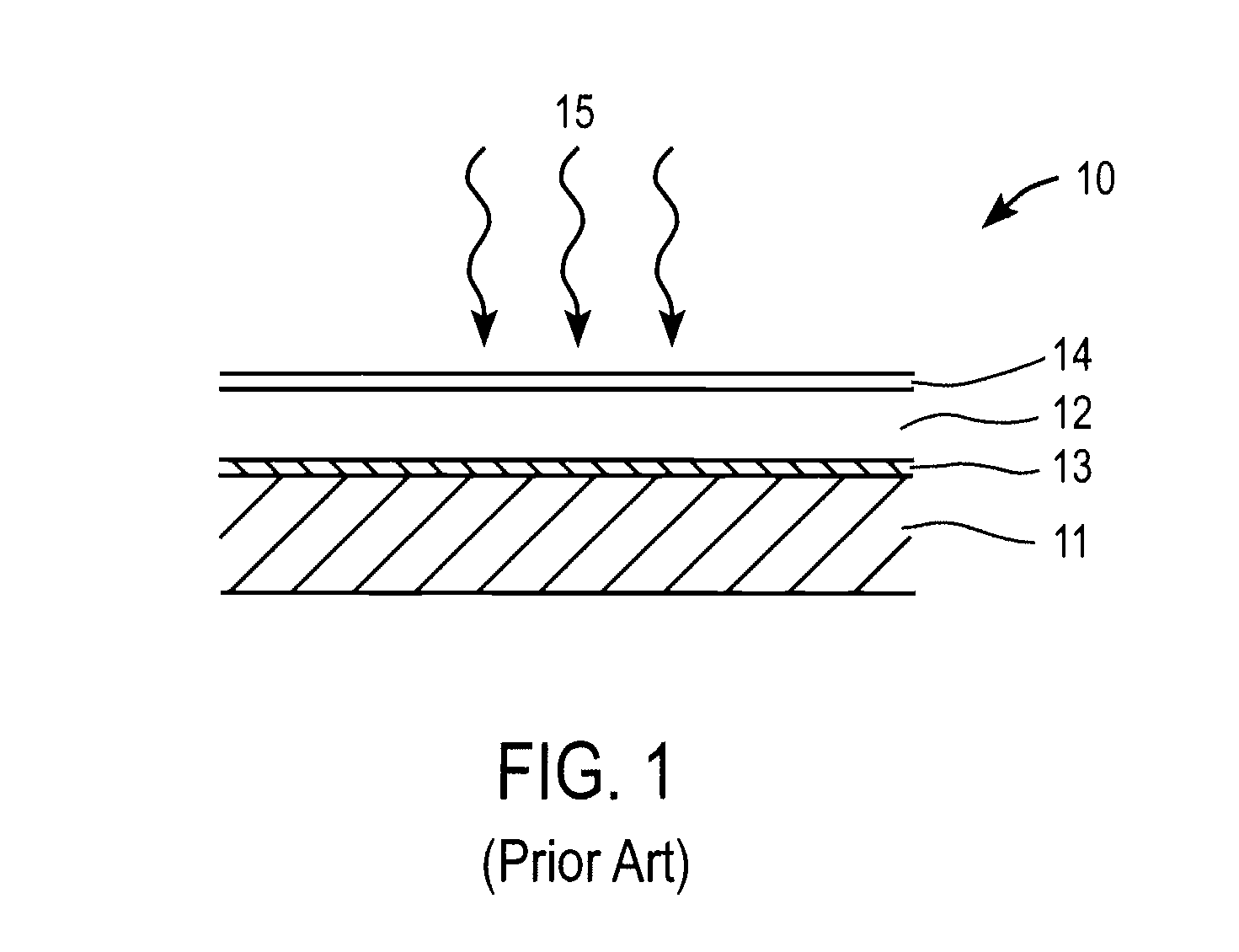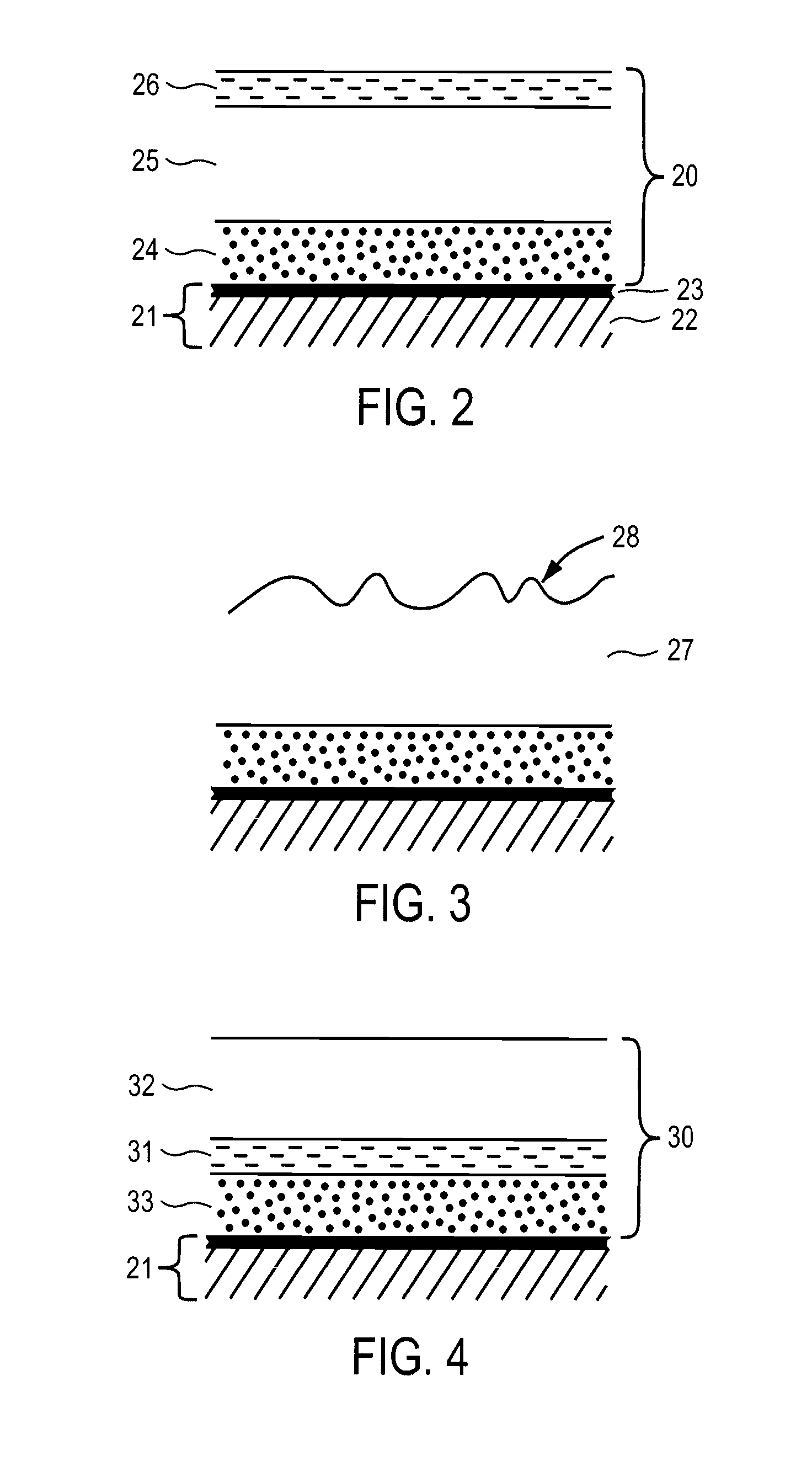Precursor Containing Copper Indium And Gallium For Selenide (Sulfide) Compound Formation
a technology of selenide and compound, which is applied in the field of precursors containing copper indium and gallium for selenide (sulfide) compound formation, can solve the problems of compound film peeling, poor adhesion of cuinsesub>2 /sub>film to the mo contact layer, and high cost of electricity generated by silicon-based solar cells, so as to achieve the effect of efficient use of expensive materials
- Summary
- Abstract
- Description
- Claims
- Application Information
AI Technical Summary
Benefits of technology
Problems solved by technology
Method used
Image
Examples
example 1
[0027] An acidic indium plating electrolyte was prepared using sulfamate chemistry. The electrolyte contained about 100 grams of indium metal. Sulfumic acid was used to adjust the pH to about 2. A basic Ga plating solution was also prepared using 1 M gallium chloride and adjusting the pH to about 14 using potassium hydroxide. Platinum (Pt) mesh was used as the anode for all depositions.
[0028] A glass substrate / Molybdenum (Mo) was used as the base. Mo layer was sputter deposited on the glass surface to a thickness of about 0.7 um. A Cu layer was then deposited by sputtering to a thickness of about 2000 A. Copper deposition by PVD was followed by electro-deposition of a Ga layer from the above solution to a thickness of about 950 A using a current density of about 10 mA / cm2. This was then followed by electro-deposition of In to a thickness of about 3800 A at a current density of about 20 mA / cm2. Gallium electro-deposition efficiency was determined to be at least about 70%, and In ele...
example 2
[0029] The above experiment was repeated, however, this time Cu layer was electro-deposited onto the Mo surface using a copper sulfate electrolyte containing about 150 grams / liter of copper sulfate penta hydrate and about 10 grams / liter of sulfuric acid. It was observed that when Ga electro-deposition was carried out on this electroplated Cu layer, deposition efficiency was much lower (e.g., less than about 30%) and the film was not very continuous.
[0030] The above work demonstrated feasibility of electrodepositing Ga and In on PVD deposited Cu layer so that a precursor stack containing Cu, In and Ga is obtained. Also it is demonstrated that Cu, In and Ga amounts in this stack can be varied at will to obtain the desired Cu / (In+Ga) and Ga / (In+Ga) molar ratios for best solar cell efficiency. To form the compound layer, the precursor stacks of this invention may be reacted with Se and / or S in various ways. One approach is to deposit a Se layer on the precursor stack to form a composit...
PUM
 Login to View More
Login to View More Abstract
Description
Claims
Application Information
 Login to View More
Login to View More - R&D
- Intellectual Property
- Life Sciences
- Materials
- Tech Scout
- Unparalleled Data Quality
- Higher Quality Content
- 60% Fewer Hallucinations
Browse by: Latest US Patents, China's latest patents, Technical Efficacy Thesaurus, Application Domain, Technology Topic, Popular Technical Reports.
© 2025 PatSnap. All rights reserved.Legal|Privacy policy|Modern Slavery Act Transparency Statement|Sitemap|About US| Contact US: help@patsnap.com



